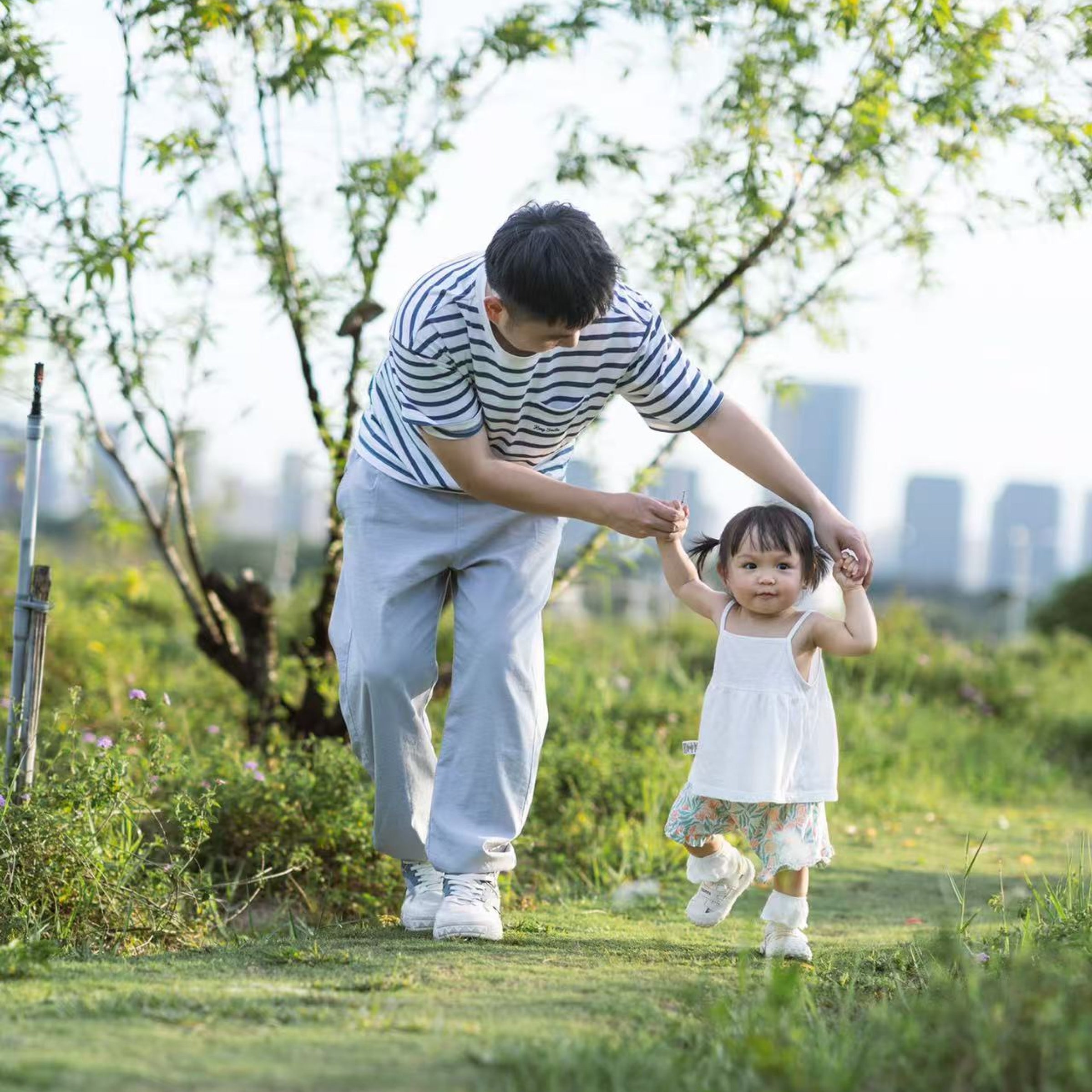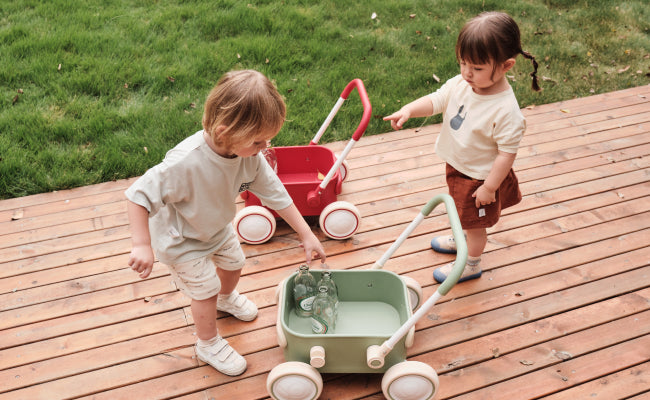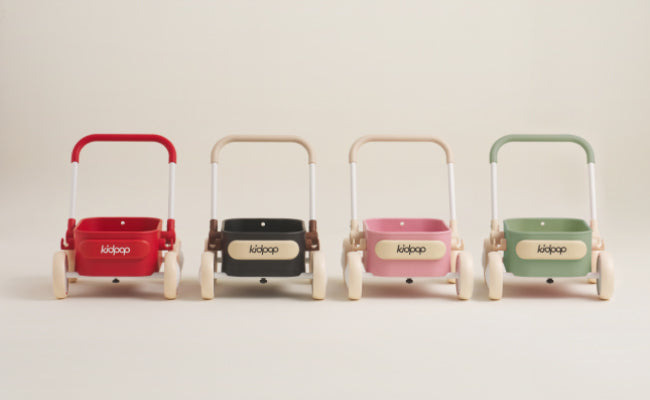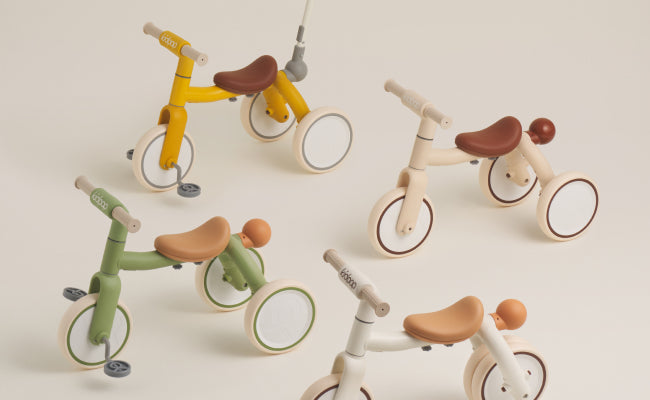
The Best Way for a Baby to Learn to Walk: What Science and Experience Say
Helping your little one take their first steps with confidence and care
Watching a baby take their first steps is one of the most memorable and emotional moments in any parent’s life. But behind that joyful milestone lies a common question: What’s the best way for a baby to learn to walk?
Walking isn’t just a motor skill—it’s a major developmental achievement. While every child moves at their own pace, there are gentle, effective, and evidence-based ways to support your baby’s journey from wobble to walk.
In this article, we’ll explore:
-
When babies typically start walking
-
How to support walking development naturally
-
What the experts recommend (and warn against)
-
And how tools like baby walkers or ride-ons actually fit in
Let’s take a step-by-step look.
When Do Babies Learn to Walk?
According to the American Academy of Pediatrics (AAP), most babies take their first independent steps between 9 and 15 months, though some may walk earlier or later. “Normal” is a wide range.
Dr. Tanya Altmann, pediatrician and author of Baby and Toddler Basics, reminds parents:
“Walking doesn’t happen overnight. First comes muscle control, then balance, then confidence. Crawling, cruising, pulling up—it’s all part of the plan.”
The Best Way for a Baby to Learn to Walk? Let Them Lead.
The best walking support is natural movement in a safe space. Experts agree that the following approaches are most effective:
✅ 1. Give Your Baby Floor Time
Encourage lots of supervised play on the floor. This helps build:
-
Core strength
-
Balance
-
Spatial awareness
Avoid extended time in baby swings or activity centers that restrict movement.
✅ 2. Let Them Go Barefoot Indoors
Walking barefoot helps babies:
-
Grasp the floor with their toes
-
Strengthen foot muscles
-
Develop proper posture
AAP recommends soft shoes only when walking outdoors.
✅ 3. Encourage Cruising
Place sturdy furniture nearby to help your baby "cruise" along edges. You can motivate movement by placing favorite toys just out of reach.
✅ 4. Offer Push Toys—Not Walkers
Contrary to popular belief, traditional baby walkers (the kind babies sit inside and roll around) are not recommended by the AAP due to safety risks and potential delays in motor development.
Instead, push toys or toddler wagons (like those from kidpop) offer a safer and developmentally appropriate alternative. These tools:
-
Encourage upright walking
-
Require active balance
-
Give babies confidence without over-assisting
Is It Okay to Help a Baby Walk by Holding Their Hands?
Yes, but in moderation. Holding your baby’s hands as they toddle is a great bonding activity and helps with coordination—but avoid overdoing it. Let them explore independently too.
🧸 Which Toys Support Walking Development?
According to a 2020 study in the Journal of Motor Behavior, toys that engage both upper and lower body movement are most effective in early walking development.
Look for:
-
Push wagons or carts
-
Stable ride-ons
-
Soft climbing blocks
-
Interactive floor mats
Pro tip: Choose toys with adjustable speed resistance to avoid runaway walkers.
🌱 Every Step is a Milestone—Not a Race
Some babies walk at 10 months. Others wait until 16 or even 18 months. Unless there are other signs of delay (which we’ll explore in a later blog), walking late is not necessarily a cause for concern.
What matters most is providing:
-
Time
-
Safe space
-
Encouragement
-
Tools that support—not replace—the learning process
Conclusion: Walk With, Not Ahead Of, Your Baby
There’s no shortcut to walking readiness, and no perfect technique. The best thing parents can do is observe, support, and celebrate each small win—from pulling up to letting go.
So, what’s the best way for a baby to learn to walk?
Let them explore the world step by step—with your encouragement, not your pressure.
And if you’re looking for a ride-on or push wagon that aligns with child development research, consider tools like the kidpop PULA wagon, thoughtfully designed for balance, grip, and joyful movement.


